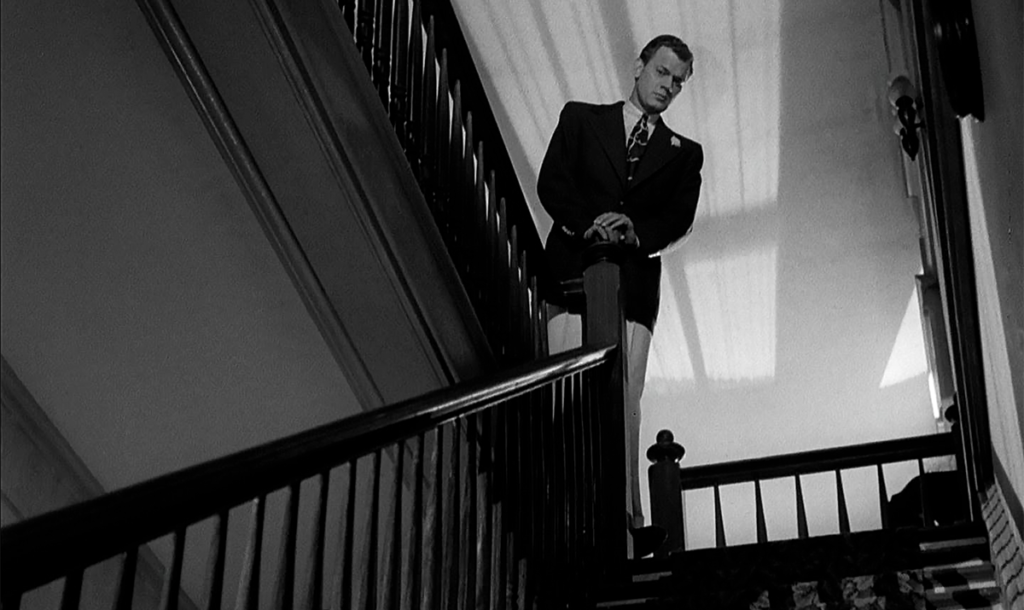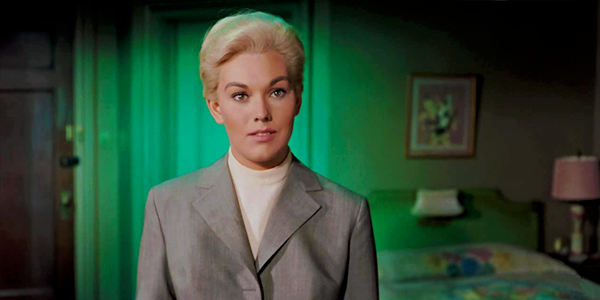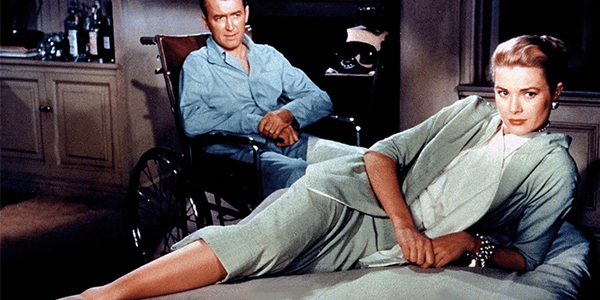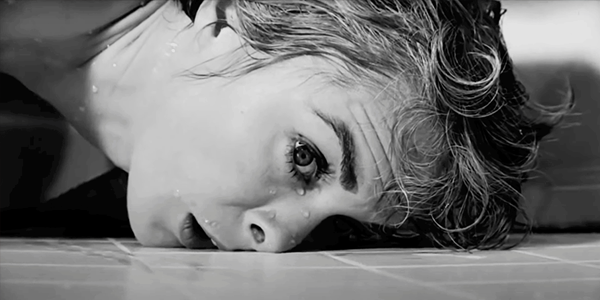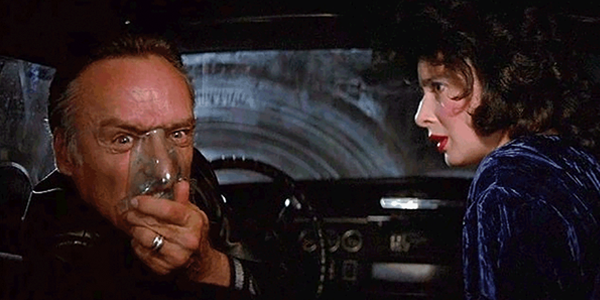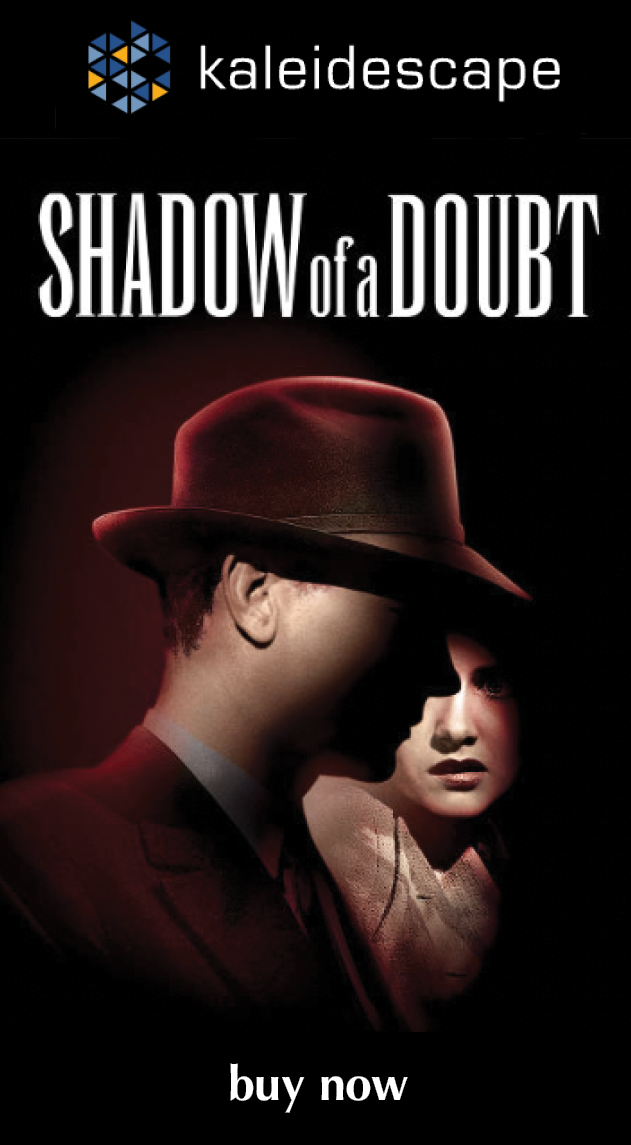related reviews
Sign up for our monthly newsletter
to stay up to date on Cineluxe
One of Hitchcock’s very best films almost flawlessly presented in 4K HDR
by Michael Gaughn
May 9, 2022
I suspect it’s a rights thing, but the latest round of Hitchcock in 4K is a surprisingly weak lot. There can’t be more than a handful of people clamoring for The Trouble with Harry and Family Plot, and yet there they are. No Strangers on a Train anywhere to be seen. But there is one standout in the pack—Shadow of a Doubt, which, along with Strangers, may be Hitchcock’s best work.
I realize that last bit is an arguable, if not controversial, statement, but both of those films rank at the top for me exactly because they don’t exhibit the kind of bravura showmanship, bordering on P.T. Barnum, that’s generated such mass affection for his mid to late ‘50s concoctions from Rear Window through Vertigo to North by Northwest. Both Shadow and Strangers stay focused on the material, with the film technique always in proportion, never overwhelming it. As a result, you have a sense throughout both of completely developed characters in believable environments instead of specters drifting through stage-managed dreamworlds.
And let’s cut right to it: Shadow of a Doubt is the best 4K HDR Hitchcock release to date. It’s a still compelling, even riveting, work presented in a way that couldn’t be more true to how the film was made, without any jolts triggered by bad elements or overzealous hands at the knobs. If you want to see a Hitchcock film from the period when he was in full control of his artistry presented pretty much as he intended, this is it.
And it isn’t a museum piece. Not only was Shadow about 30 years ahead of its time with the treatment of its protagonist, but in not only subject matter but technique feels surprisingly contemporary. Hitchcock sensed, in the midst of World War II, before the A bomb and before the horrors of the concentration camps became known, how that conflict would yield a more cynical world and used the Joseph Cotten character to develop a take on society that wouldn’t even begin to scratch at the door of pop culture until more than 10 years later in works like Aldrich’s Kiss Me Deadly and Thompson’s The Killer Inside Me. You can also sense the influence on the anti-hero films of the ‘70s, and on the far more adolescent and superficial take on dark that seems to have permeated the whole of current culture.
But there’s no raging madman here, no cocksure vigilante. Cotten’s Uncle Charlie is a sophisticated but damaged man in a smug and content society that can only survive sheltered from the realities of the larger world. It’s clear that Hitchcock’s sympathies lie with him, one of the many troubling aspects of a deeply troubling work. Hitchcock creates an idyllic microcosm and then gets you to pierce it by adopting the viewpoint of a misanthropic murderer. That’s old hat now, but he has such a firm command of his material that it still works, and, by contrast, shows just how shallow and silly the current efforts are.
This is probably Cotten’s best performance, here able to craft a role without being upstaged by Welles’ endless scenery chewing in Citizen Kane or baroque expressions of technique in Magnificent Ambersons. His Uncle Charlie is a compelling human being, the most rounded of the film’s characters, not some convenient bogeyman. That doesn’t mean, though, that Hitchcock denies he’s essentially evil. In fact, he underlines that brilliantly in the famous shot of the train bearing Uncle Charlie arriving in Santa Rosa vigorously belching a massive cloud of thick black smoke, like it’s in transit from the mouth of Hell, the noxious plume then settling over the town like a shroud. That shot is particularly striking in this transfer—especially the depth of the black cloud against the highlights of the sun-drenched All-American town. And it’s done while maintaining the balance of the overall visual fabric of the film.
But here’s why Shadow of a Doubt is a great movie: While Uncle Charlie is fully developed, all of the other characters are fleshed out to nearly the same degree. And although Hitchcock’s disdain, if not contempt, for their small-town world is clear, he realizes he needs to honor that world in order to make Cotten’s troubling of it compelling. And he stays so true to its conventions that those other characters’ emotions are convincing throughout and are actually, at times, moving. You’d be hardpressed to find anything like that in any other Hitchcock film. You can sense he feels drawn to their sheltered society—or at least to the reasons why the characters find it so attractive—while knowing it’s a kind of Potemkin village that can never stand. (Lynch tried to adopt that same stance in Blue Velvet, deliberately exploiting parallels with Shadow along the way, but didn’t pull it off half as well.)
And then there are the seemingly endless grace notes, the kind of thing a master artist does when he has an overabundance of energy and ideas but is so in sync with his material that he knows how to make every touch apt. Those accents, ornaments, and inflections are so abundant, there’s little point in citing many, and it would take a lot of the fun out of watching the movie to anticipate them here, but to highlight a couple: Hitchcock, feeding from his roots in German Expressionism, uses some angles and lighting (like looking down on Teresa Wright through the staircase balusters) that would seem gratuitous in any other film or in lesser hands but, because they’re acute extensions of the character’s frame of mind, ring true. Or the various startling ways he reveals Cotten’s character by having him engage directly with the camera, striding toward it when he goes to grab the newspaper from Wright’s hands or the slow track in on his profile as he makes his “silly wives” speech only to have him turn and look straight into the lens after the camera has come uncomfortably close.
There’s not a lot to say about the transfer exactly because it so well serves the material. There doesn’t seem to have been any attempt to “improve” the look of the original film (a frequent sin in 4K HDR transfers) but instead a deliberate effort to honor its visual fabric and keep the look consistent throughout. For the first time in a while, there was nothing here that at any point pulled me out of the movie, and someone deserves kudos for that alone. I didn’t realize until this viewing how extraordinarily well photographed this film is, and the transfer can take a lot of the credit for that.
What can I really say about the sound? It’s a stereo mix of the original mono that never draws too much attention to its stereo-ness—which, until it occurs to someone to make the original mono part of 4K presentations, is probably the best we can hope for. My only complaint is that the Dimitri Tiomkin cues can come on a little strong, especially during the otherwise low-key “chase” scene near the beginning. This disparity was probably in the original mix, but the presentation here is so dynamic it only heightens it.
To sum up: Shadow of a Doubt is one of Hitchcock’s very best films presented in the best 4K HDR transfer to date of any of his work. Yes, watch it to savor the transfer, but also watch it to savor the film, which is one of those classics that’s so strong at the core that it feels untouched by time.
Michael Gaughn—The Absolute Sound, The Perfect Vision, Wideband, Stereo Review, Sound & Vision, The Rayva Roundtable, marketing, product design, some theater designs, a couple TV shows, some commercials, and now this.
PICTURE | There doesn’t seem to have been any attempt to “improve” the look of the original film but instead a deliberate effort to honor its visual fabric and keep the look consistent throughout
SOUND | The stereo mix of the original mono never draws too much attention to its stereo-ness, although the music cues can come on a little strong at times
© 2023 Cineluxe LLC


